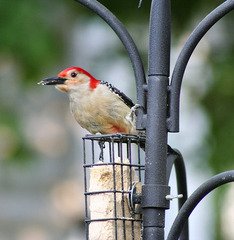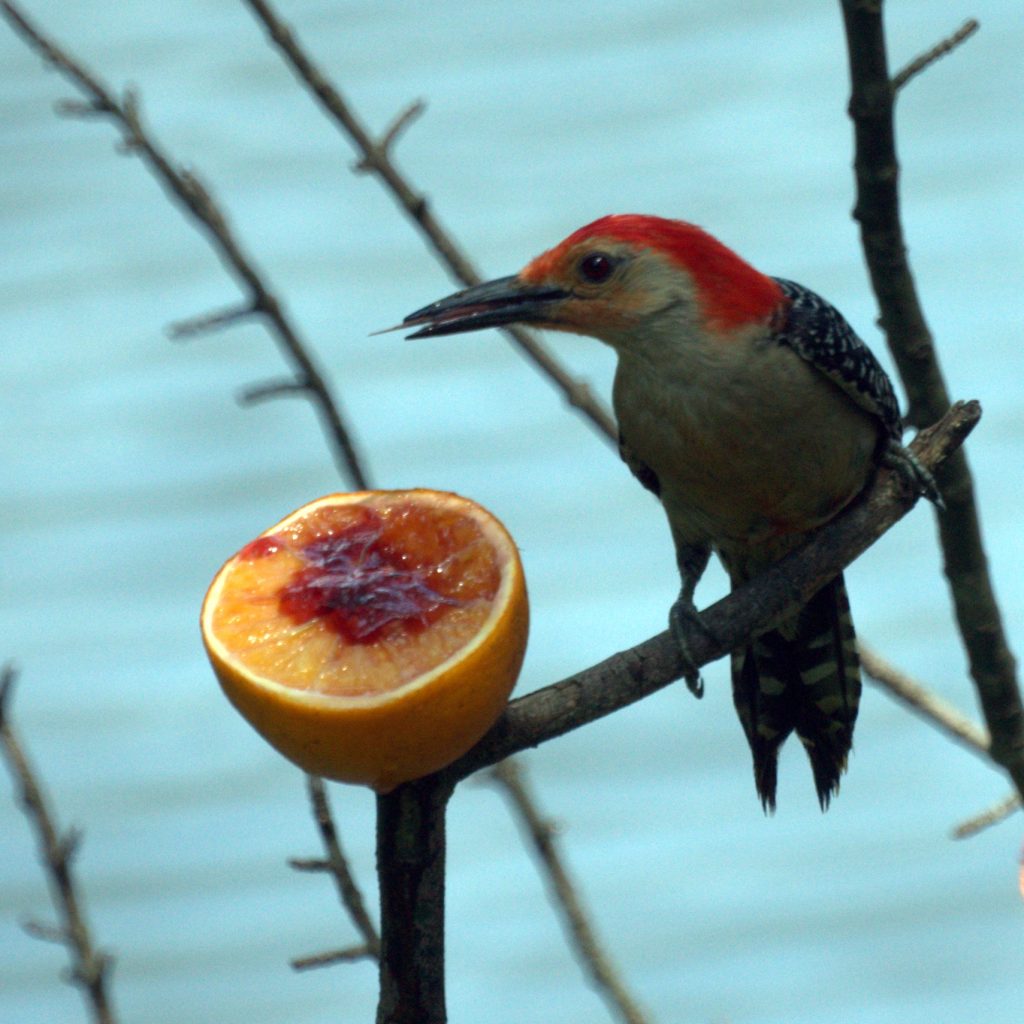by Doug Becker
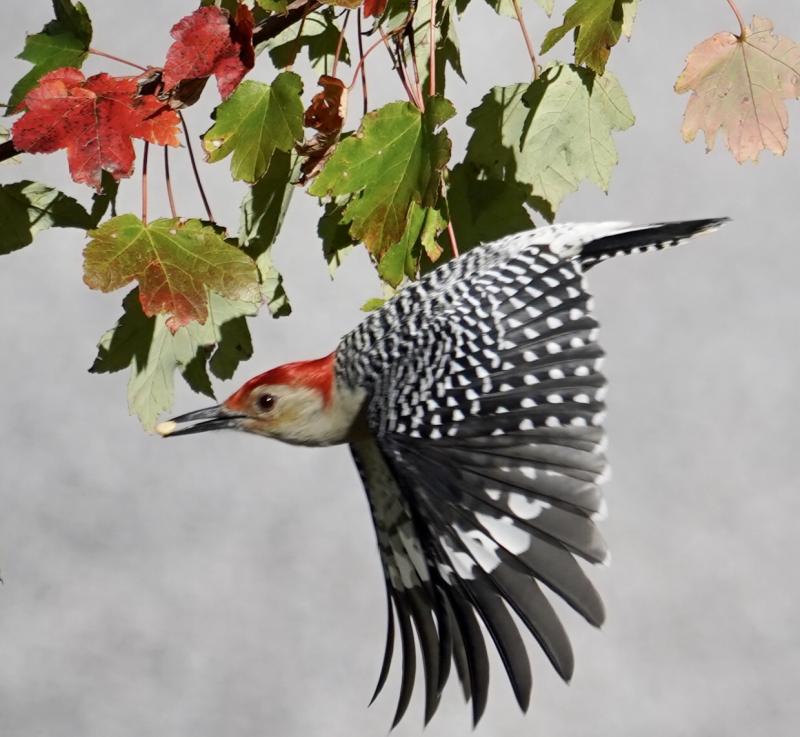
Personally, I love to watch all the Woodpeckers, Sapsuckers, and Flickers. But, somewhere between the little Downy Woodpecker and the huge Pileated Woodpecker is a favorite. The Red-bellied Woodpecker is medium-sized, has a beautiful black and white ladder back and wings, a light buffy-tan face, breast, and underparts, and a brilliant, red cap and neck. Female markings are very similar, except she doesn’t have the bright red on the very top of her head. Finally, they’re called Red-bellies because of a faint patch of light red by their legs which can be difficult to see. Bottom line? Red-bellied Woodpeckers are strikingly beautiful, and clearly stand out in their crowd.
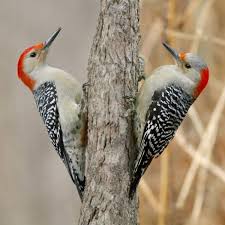
Red-bellied Woodpeckers are common across the eastern half of the United States with the exception of the far-northern New England states. In their range, any suet feeder or platform feeder with mature trees nearby will attract Red-bellies all year long. In the fall and winter, berries, sunflower seeds, nuts and fruit make good feed, and a bit of peanut butter doesn’t hurt. In the forests, the Red-belly is a forager. They don’t drill holes like their cousins, but with a sticky tongue that can reach two inches past the end of their beak, the Red-bellied Woodpecker can easily forage their meals from small cracks and crevices in the trees. They will also store nuts in cracks of trees or fence posts for later, and for an easier way of breaking them open. BTW, Red-bellies have been seen drinking nectar from Hummingbird feeders. A woodpecker at the Hummingbird feeder? Yep!
Red-bellied Woodpeckers are cavity nesters. They will take over other bird’s cavity nests, but prefer a deep cylindrical space for a clutch of 2-6 eggs, 1-3 times per year. Like many cavity nesters, good real estate is getting harder and harder to find with constantly less dead tree stands available. As a result, bird boxes are a great help to the Red-bellied family. The necessary design has a 6″x6″ floor, 14″ to the ceiling, and a 2.5″ entrance hole 11″ above the floor. The best material is red cedar, rough-cut on both sides, so the birds can climb inside and out. My personal feelings, go to your computer and order a couple professional boxes. They’ll be at your door before you know it. Then, it’s up to the Red-bellies to find the box and make home before the aggressive European Starlings find it.
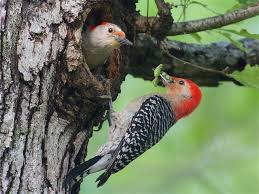


You might want to get familiar with the loud and rolling call of the Red-Bellied Woodpecker. Their most common call is a shrill Kwirr, or churr sound given off by both sexes. Just being somewhat familiar with the calls and sounds of birds will alert you to who and what is near. Getting the right bird identification can be a challenge, and can make for the best debates at the end of the day. If you haven’t had a positive ID of a beautiful and entertaining Red-bellied Woodpecker, then you have a treat in the waiting! See ya out there.

